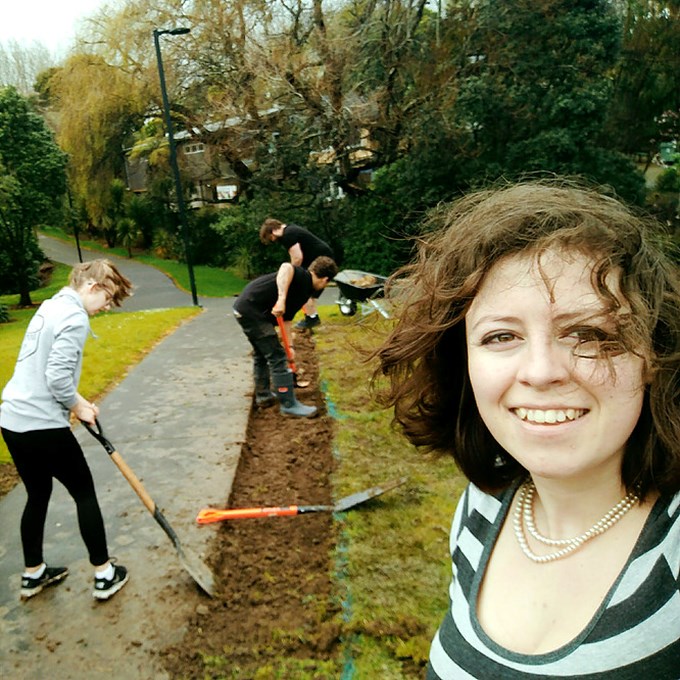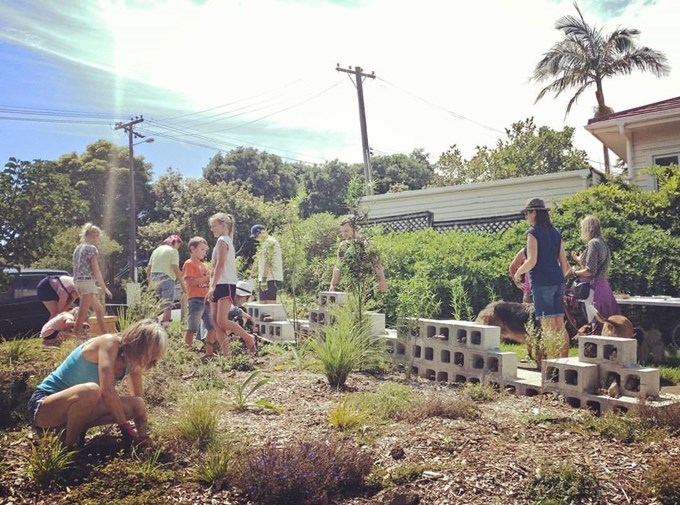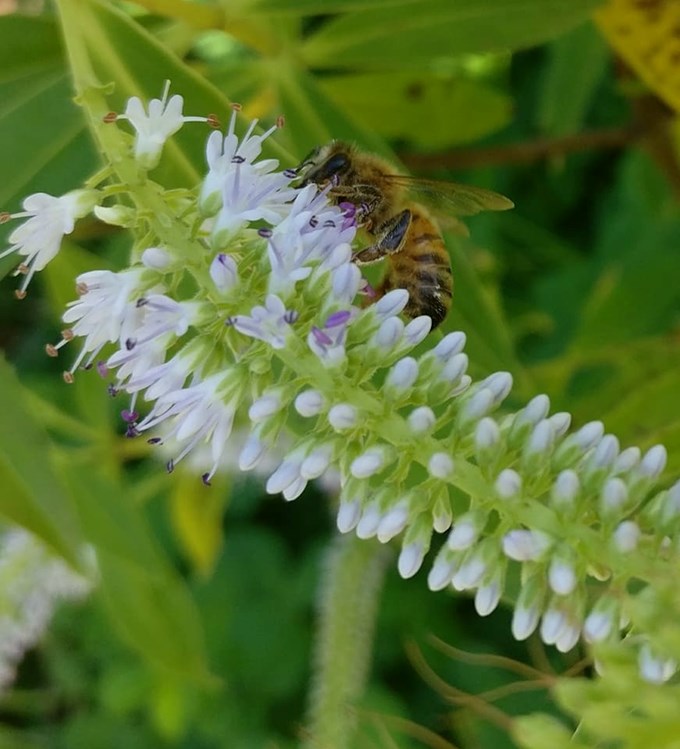OurAuckland talks to Andrea Reid, who was highly recommended in the Innovator category at the 2017 Auckland Council Biosecurity and Biodiversity Volunteer Awards. Andrea is the creator and champion of Pollinator Paths, a movement aiming to connect the habitats of Auckland’s pollinators.
Four years ago, landscape architect Andrea Reid discovered Auckland’s pollinators were in trouble.
“I was shocked by the news coverage at the time around the loss of pollinators worldwide and what that could mean for us if they became extinct and could no longer fulfil their pollination services,” she says.
Andrea realised that although Auckland has a lot of green spaces, many of them are disconnected, especially in the central city and fringe. This is bad news for pollinators like bees, bats, birds and butterflies, which need to travel around.
She decided to dedicate her final year of university to researching how to design for pollinators. After graduating, she felt it would be a disservice to the project if she didn’t make it a reality and the Pollinator Paths movement began.
Pollinator Paths
Andrea’s vision is to build a network of Pollinator Paths throughout central Auckland to connect the habitats of our major pollinators. By creating smaller pocket parks, existing habitats are linked together to form a pathway.
She created the first Pollinator Park last year in collaboration with Waitematā Local Board, Auckland Council, Gecko NZ Trust, Aecom and local community groups.
The park, in Hakanoa Reserve in Grey Lynn, is the stepping stone in the proposed pathway linking the habitats of Grey Lynn Park and Cox’s Bay Reserve.
Plans for living walls, berm planting, rooftop gardens and more will ultimately form a number of additional paths across Ponsonby, Kingsland, Grafton and the central city.
“Underutilised spaces within road, stream, highway and rail corridors will be transformed into spaces where pollinators can thrive and green spaces will start to wind through the city.”
Andrea says Pollinator Paths will bring crucial pollinators into our urban areas to allow Auckland’s growing urban food network to thrive.
“Pollinators are one of those little things in life that we take for granted. But without them, almost one-third of our food source could disappear.”
Become a Pollinator Pal
As the movement grows and expands, more volunteers are needed.
“Whether you are a passionate community member who would like to help on planting days, a community group with shared interests wanting to connect or a business who would like to partner with us, we would love to hear from you," says Andrea.
If you would like to get involved and help make Auckland the safest city in the world for pollinators, you can visit the Pollinator Paths website and sign up to the newsletter, like them on Facebook or follow them on Instagram.




